coolpixs4
Junior Member level 1
How could it be 28~30dBi gain "Model: GJX-698-2700-30"? Can anyone explain please!
I search for 915MHz high gain antenna and found this:
Does it means with the max input power +/- 2dBi antenna gain ? (lowband : -2dBi, highband: +2dBi max)
Because the omnidirectional antenna with a very simple structure like such kind of this one without a reflector or built-in amplifier; I wonder how it gets 30dBi antenna gain?
check the attached image for adv-specs & the broken inner of the antenna
I did a rough measurement with lab equipment with our 6.5dB gain horn
(SGA-TX-19dBm, distance: 1m) and observed by SPA -----9dBm RX
by calculation => -2dBi @920MHz (it seems correct for Omni-direction dipole antenna)
I search for 915MHz high gain antenna and found this:
Does it means with the max input power +/- 2dBi antenna gain ? (lowband : -2dBi, highband: +2dBi max)
Because the omnidirectional antenna with a very simple structure like such kind of this one without a reflector or built-in amplifier; I wonder how it gets 30dBi antenna gain?
check the attached image for adv-specs & the broken inner of the antenna
I did a rough measurement with lab equipment with our 6.5dB gain horn
(SGA-TX-19dBm, distance: 1m) and observed by SPA -----9dBm RX
by calculation => -2dBi @920MHz (it seems correct for Omni-direction dipole antenna)
Attachments
-
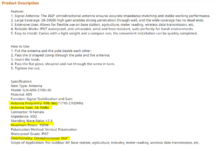 Capture.PNG180.4 KB · Views: 100
Capture.PNG180.4 KB · Views: 100 -
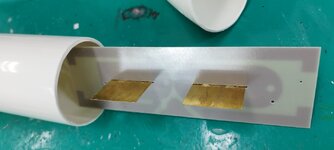 KakaoTalk_20221114_144349925_03.jpg217.7 KB · Views: 100
KakaoTalk_20221114_144349925_03.jpg217.7 KB · Views: 100 -
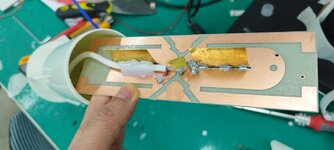 KakaoTalk_20221114_144349925_04.jpg262.2 KB · Views: 103
KakaoTalk_20221114_144349925_04.jpg262.2 KB · Views: 103 -
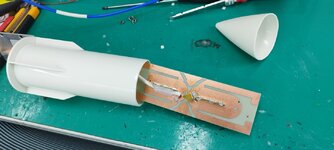 KakaoTalk_20221114_144349925_05.jpg291.3 KB · Views: 121
KakaoTalk_20221114_144349925_05.jpg291.3 KB · Views: 121 -
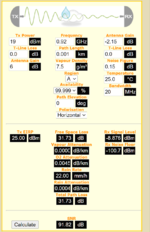 Capture1.PNG130.2 KB · Views: 101
Capture1.PNG130.2 KB · Views: 101 -
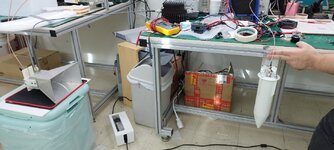 KakaoTalk_20221114_144349925.jpg356.4 KB · Views: 115
KakaoTalk_20221114_144349925.jpg356.4 KB · Views: 115 -
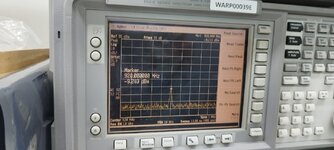 KakaoTalk_20221114_144349925_01.jpg281.9 KB · Views: 99
KakaoTalk_20221114_144349925_01.jpg281.9 KB · Views: 99 -
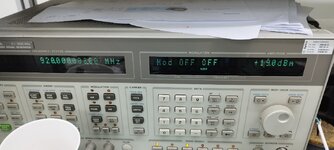 KakaoTalk_20221114_144349925_02.jpg267 KB · Views: 100
KakaoTalk_20221114_144349925_02.jpg267 KB · Views: 100